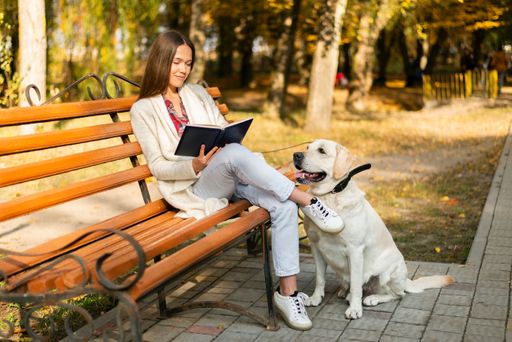Separation anxiety is a widely discussed behavioral problem that develops in every other hyperactive dog. It’s promoted by an extra-caring attitude of dog owners, who accidentally signal their dogs that they are going to stay with them all day long.
What is Separation Anxiety?
Separation anxiety is a type of anxiety that becomes apparent within 20 to 30 minutes of leaving the dog alone by the owner. The anxiety ranges from mild to severe level. You can treat it by proper, patient and consistent training, and a little behavior change of the dog owner.
Symptoms of Separation Anxiety
Dogs live in packs, and loneliness can appear stressful to them as if the owners have abandoned them. Symptoms of separation anxiety can vary from dog to dog, but in general, dogs will show the following signs of stress:
- Loud howling or crying noises
- Destructive behavior (furniture, doors, stuffed toys, etc.)
- Excessive barking
- Indoor urination or defecating
- Attempts of escape from home
- Following you around the house when the time of departure comes near, and making sad faces
Reasons of Separation Anxiety
There are various reasons behind development of separation anxiety in dogs.
- In some dogs, the onset of separation anxiety is related to a change in daily routine of dog or the family members. A dog, who lives with other house pets, can readily accept the changes.
- A rescue dog or a newly adopted dog can show signs of separation anxiety as he has not gotten used to a new environment.
- If the separation times are prolonged suddenly, your pooch can suffer from separation anxiety. The dog will not understand the sudden change of behavior and may feel abandoned.
- The shifting from one place to another during a trip or permanently can lead to separation anxiety in dogs.
- Death of a family member or another pet can create anxiety and stress in the dog, due to a lack of understanding of the phenomenon of life.
- New baby, visitor, or pet can be culprits, too.
- If the dog has spent a long time away from you in a boarding kennel, at the veterinary clinic or with a pet sitter, he may develop separation anxiety.
Most of the times, over-protective and caring pet owners often spoil their fur-baby by always being there and cuddling them. When they change their routine, it creates behavior troubles in cute little dogs, especially small dogs.
Treatments
First, visit the vet to confirm the real issue behind indoor urination—it can be a symptom of kidney or bladder problems. Excessive crying is indicative of pain too. So, get the symptoms recognized by the vet before you set out to treat them. Moreover, understand the severity of the problem, i.e., from mild to severe level of separation anxiety.

Mild separation anxiety can be treated by employing methods of mental stimulation and positive reinforcement during departure times. Provide the dog with some puzzle toys with hidden treats that are his most favorite ones, so that he can associate your departure with the best treats, and stays excited. Never give those treats when you are at home. Besides this, do a lot of exercise with your hyperactive pooch to drain the excess energy, so he may not indulge in anxiety and stress. Stay consistent.
Severe separation anxiety can be cured by adopting methods like counter-conditioning and desensitizing. In this training method, you have to stay normal during departure and arrival times. You can cuddle up with the pet once he is calm and gentle. Whenever he is showing overexcited behavior, don’t promote it by petting or loving him. For behavioral help, you can get in touch with ASPCA.
In extreme cases, medications like melatonin are given to cure separation anxiety. Consult the vet for a proper recommendation.
The rule of thumb is “to be consistent”. The dog owners who show inconsistent behavior create confusion in the dog’s mind between what’s acceptable and what’s unacceptable. Such behavior can never produce long-term results. Dog training demands a lifetime of consistency in attitude!



















